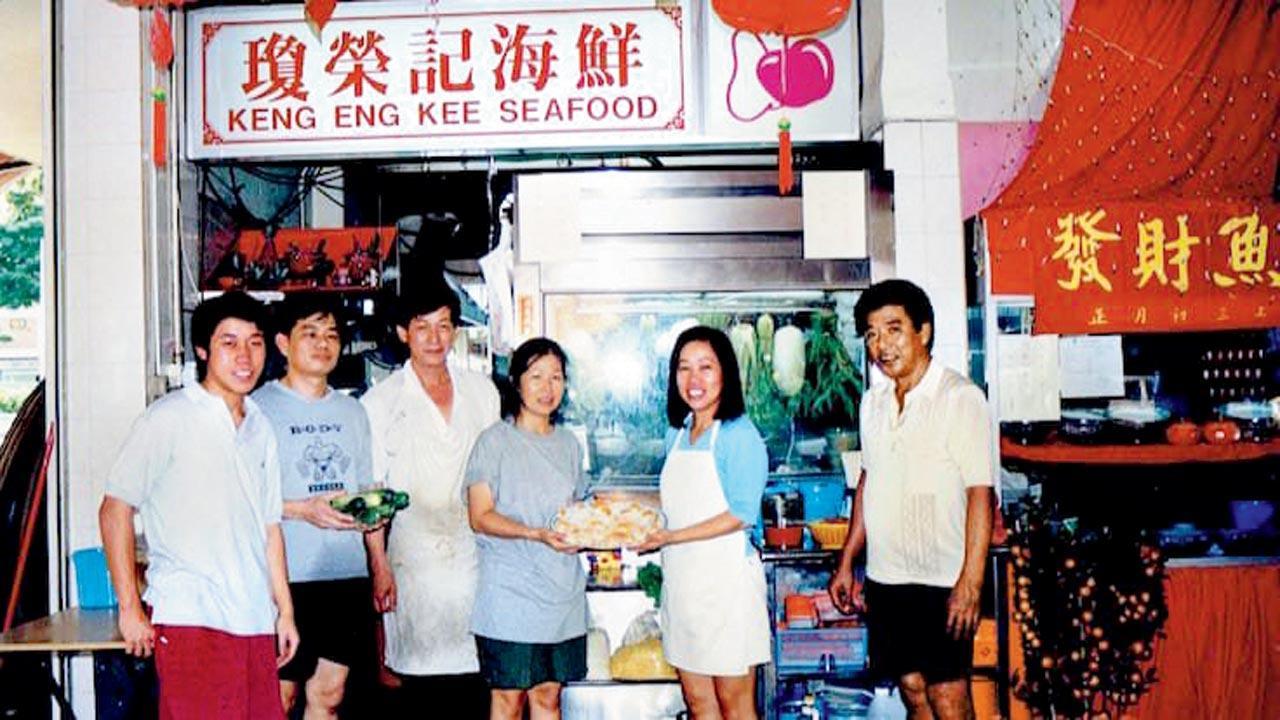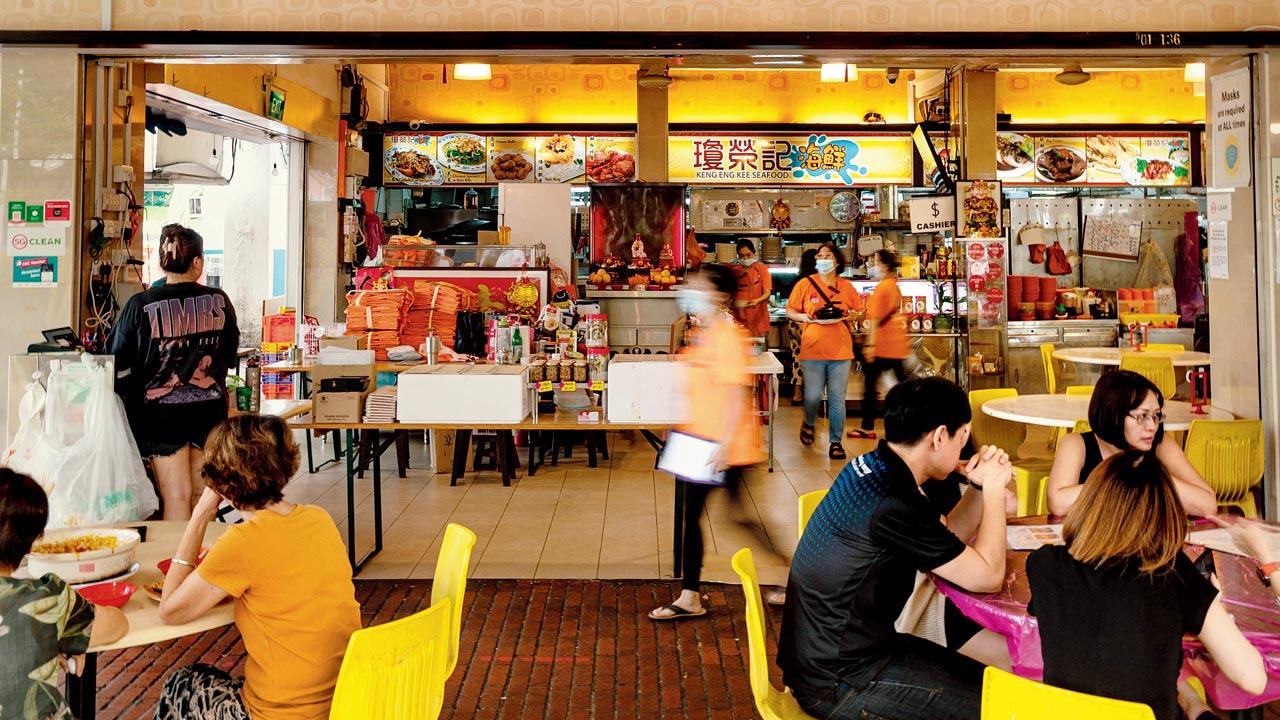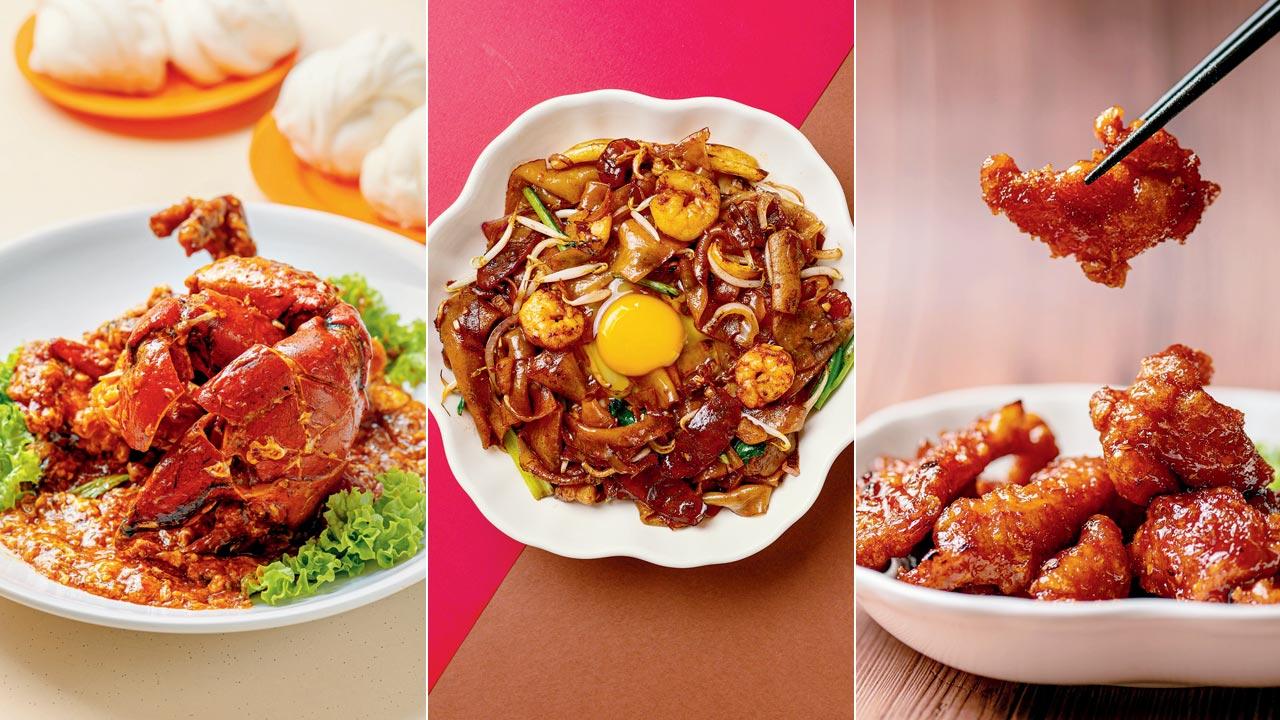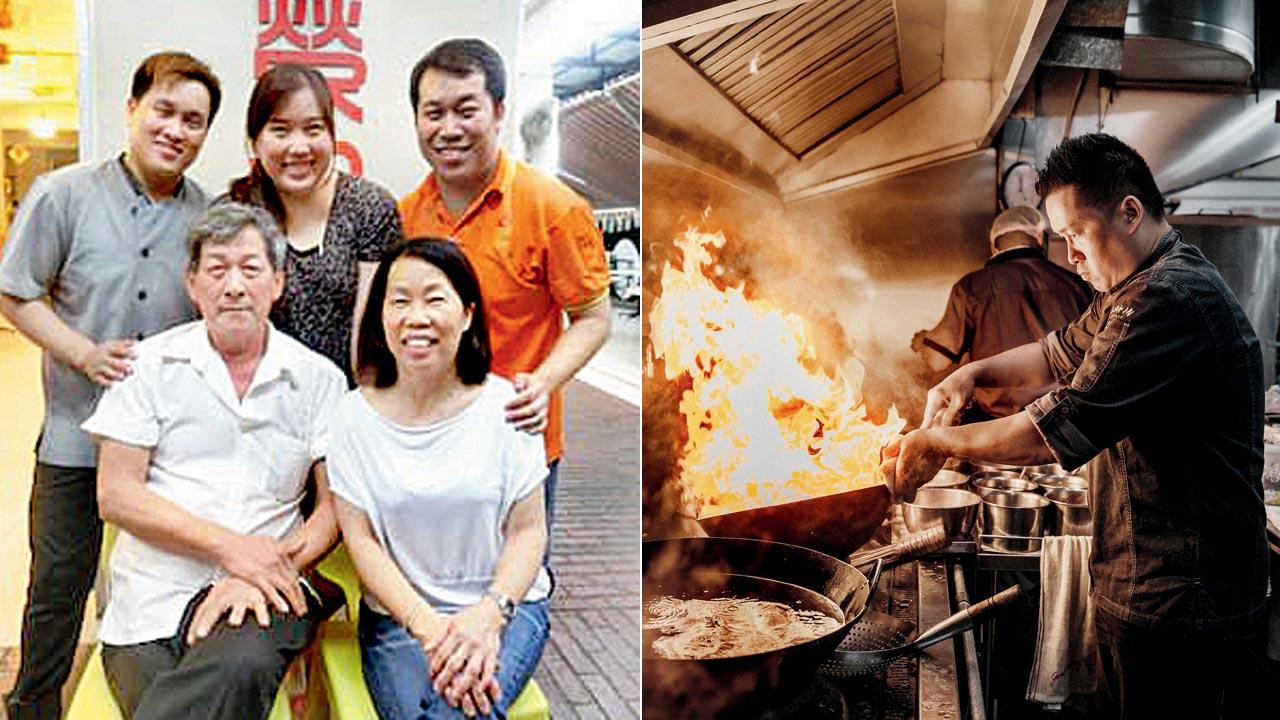The island nation’s Michelin Guide-listed, award-winning street food enterprise, Keng Eng Kee Seafood, will bring its flavours to a city pop-up

(From left) Paul Liew; Liew Choy (in apron) and Mdm Koh (second from right) with ex-employees
The aromas wafting across Singapore’s famous street food vendors, some of whom have thrived across decades, thanks to age-old culinary secrets, have drawn visitors from all over the globe. Home to some of the world’s most bustling hawker markets, many of these iconic eateries have even won recognition from the prestigious Michelin Guide. To give Mumbai a taste of one of their most celebrated seafood eateries that opened in 1970, the Consulate General of the Republic of Singapore in Mumbai and the Singapore Tourism Board, along with The Soul Company and Monika Alcobev Limited, are bringing Keng Eng Kee Seafood (KEK) to Magazine St Kitchen in Byculla this weekend.
The family-run business is currently helmed by its third-generation siblings —Wayne Liew (head chef), Paul Liew (managing director) and Jiamin Liew (operations director). Ahead of their first-ever visit to India, Paul shares his excitement over a video call. “We are a four-member team. It’s our first visit to India, so we can’t wait to explore the local flavours. With its rich history there’s so much to learn,” he admits.
 The restaurant as it currently stands
The restaurant as it currently stands
The KEK legacy
It all started with a small hawker stall at the former Havelock Road Hawker Centre in Singapore. KEK was opened by Paul’s maternal grandparents, who handed the business over to their daughter and son-in-law. While Paul and his siblings started helping in the kitchen since they were pre-teens, their parents had no intention of having them join in or take over the family business. “My grandparents never wanted my parents to take over because they sent my mom to school; the same thing happened to us. Our parents worked hard to send us to university, hoping that we would work in offices in the business district,” reveals Paul.
“As Asians, family values play a significant role. Even in our youth, we had always helped out at the hawker stall. We wanted mom and dad to be less tired. Unknowingly, it instilled a sense of passion in us. When I finished university, where I majored in business marketing, I thought that I would obey my parents; wear a tie, dress well, and work in an office. After I graduated — around Chinese New Year, which is the peak session for our business — mom suggested that before I step into the real world, I should help them for a while. That became a couple of months, and then, years,” he recalls.
 KEK’s signature chilli crab; moonlight horfun; Coffee pork ribs
KEK’s signature chilli crab; moonlight horfun; Coffee pork ribs
While Singapore’s hawker culture has been thriving, it faces a challenge as few gen-next owners wish to take the family business forward. “The long hours discourage them from joining the industry. But there are also a few like us who share the passion. Newer generations can contribute beyond technology; they can bring fresh ideas into business management.”
The siblings possess no sense of entitlement. “We started from scratch, as apprentices would in the kitchen. We cleaned the kitchen and the washrooms, and learned to take stock. Our parents didn’t want us to take over a business but to value its origins and appreciate our staff. Wayne has a better palate, so he headed to the kitchen. He speaks less, unlike me; so, I went into marketing,” reminisces Paul. The restaurant was listed in the Michelin Guide in 2016, and was also awarded The Michelin Plate. Paul is unfazed by the accolades, “All Singapore restaurants were excited that Michelin was coming. We were a street food restaurant, so we didn’t expect much. We stuck to our usual routines; that worked for us,” he maintains.
 (Clockwise from left) Wayne Liew; Jiamin Liew and Paul Liew with their parents, Liew Choy and Mdm Koh; (right) chef Wayne in his kitchen
(Clockwise from left) Wayne Liew; Jiamin Liew and Paul Liew with their parents, Liew Choy and Mdm Koh; (right) chef Wayne in his kitchen
Cuisine of our land
KEK is most popular for ‘zi char’, a distinctive Singaporean dining term used to describe dishes inspired by home-cooked Chinese food that is meant for sharing. “Singapore is a young country but in terms of food, we are diverse and embrace different communities that settled in Singapore. It’s not just Chinese fare; there is Singapore-Chinese, with Malay ingredients, Indian flavours and even Westernised flavours,” Paul elaborates. “We don’t have extensive lands for agriculture, so we have limited supply of produce. If we source local produce, it gets too expensive; street food should be economical. Since my grandparents’ time, we’ve been importing supplies: shrimps come from Vietnam while crabs arrive from India. We borrowed a lot from our friends from across the country to create
what we call Singaporean cuisine.”
While some dishes have survived the test of time, a lot has changed. “Our grandparents and parents had their signature dishes. These dishes evolved not just because of different ingredients in the market, but also due to a change in the diners’ palates. In my grandparents’ time, they preferred strong flavours, and dishes were oily, while in my parent’s time, they preferred lighter and subtler flavours. Today, diners want variety and complex flavours,”
Paul explains.
All-you-can-eat
The pop-up menu will feature some of their hit dishes, while also representing flavours from the past. “Since it was our first time in India, we wanted to serve the entire menu, but couldn’t. So, we carefully chose dishes that would showcase the KEK story,” says Paul. The menu includes claypot pig’s liver, a recipe by the siblings’ grandmother. There will be moonlight horfun, a wok stir-fried rice noodle dish with raw egg on top, which is their father’s specialty and Mingzhu rolls, a treasured recipe crafted by their mother, where tau fu poks (tofu puffs) are stuffed with salted egg yolk, prawns, ham, mushroom, and parsley. Among recent additions are their sought-after coffee pork ribs and chilli crab. “Coffee is not a typical ingredient but we were keen to blend it into a dish. Our marination technique is traditional, but the sauce is innovative and modern,” Paul reveals. He confesses that their iconic dish isn’t spicy by Indian standards. “Our family version is sweet, sour-ish and mildly spicy. When we were younger, our parents cooked a sweet and sour crab. When we grew up, a bit of spice was added; this gradually increased over the years. That taste reminds us of our childhood. The three-layered dish represents how Asian cultures are similar: it represents several layers of complexities. Yet, at the end of it, when you put it in your mouth, the flavours must all harmonise.”
On September 22, 23; 7.30 pm onwards (dinner); September 24; 12.30 pm onwards (lunch)
At Magazine Street Kitchen, Devidayal Compound, Reay Road East, Darukhana, Byculla.
Log on to foodmatters.in
Cost Rs 5,000
Indo-Singapore link
Paul believes that the common connection between both cultures is the community dining experience. “Asian families sit around a table, talk and share their meals even at home. Recently, I dined with chef Varun Totlani from Masque. We talked about life; we shared our food and he poured drinks for me. That’s how our cultures are.”
 Subscribe today by clicking the link and stay updated with the latest news!" Click here!
Subscribe today by clicking the link and stay updated with the latest news!" Click here!










